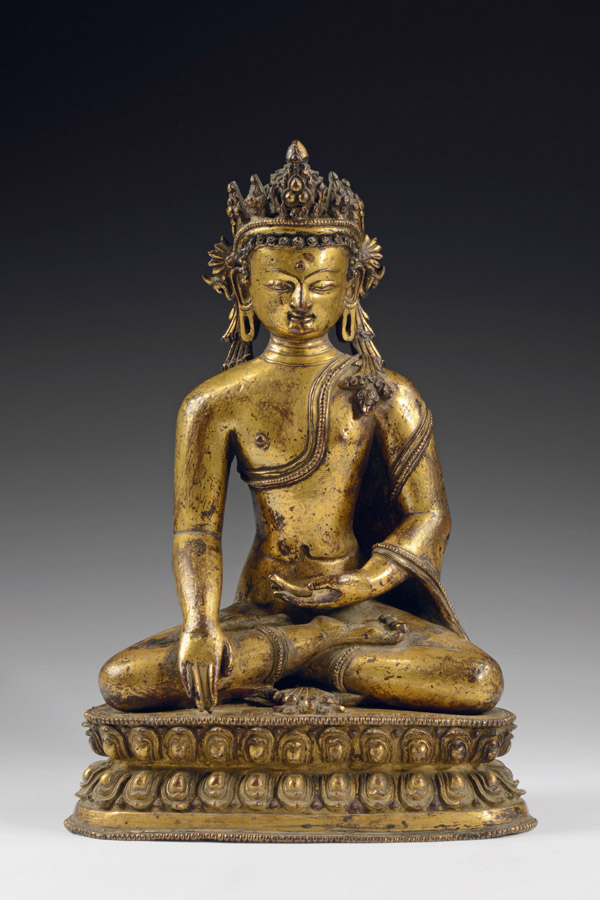Pratapaditya Pal: Roshan Sabavala’s Tryst with Himalayan Art
- click on the image to enlarge | click on the Expand icon upper left to enlarge further
click Esc to close and return to this page
Lot 40: Crowned Buddha
Gilt-bronze with applied pigment
Nepal
16th Century
10 in. (25.4 cm.)
The Buddha is seated in dhyanasana on a double-lotus throne, his left hand in dhyanamudra and his right hand in bhumisparsamudra. He is clad in a diaphanous sanghati with a beaded and incised double border that is draped gently over the arm, and neatly folded under the ankles. A thunderbolt sceptre, vajra, rests on the throne in front of his feet as a symbol of his enlightened mind. He has a wide serene face with elongated eyes, a gentle smile, with a raised urna on the forehead, the neck with three horizontal lines, and the ears with pendulous pierced lobes. His head is adorned with an elaborate foliate crown, his tight curling hair surmounted by an ushnisha.
While Buddhas are distinguished by thirty-two physical characteristics on the body, only a few of these appear in sculptures, the most popular being the top knot, ushnisha, the dot between the eyes, urna, the three curved horizontal lines on the neck, and a Dharma Wheel impression on the soles of the feet and the palms of the hands. All five are visible in the current sculpture.
The Crowned Buddha is a form of Sakyamuni Buddha, with the one addition of an elaborate crown, similar to one a king would wear. The difference between the Sakyamuni Crowned Buddha and the Five Symbolic Buddhas is that he does not wear any rich adornments or jewellery. He still maintains his austere appearance, nirmanakaya, with the crown being the only addition.
